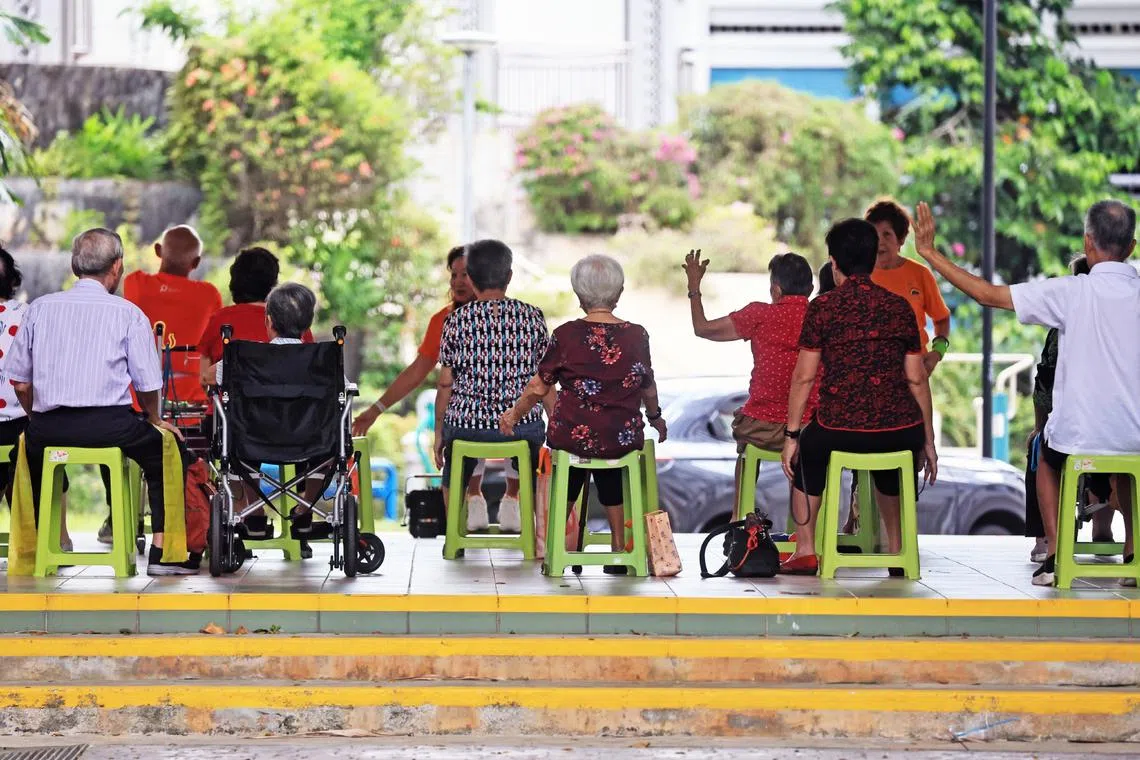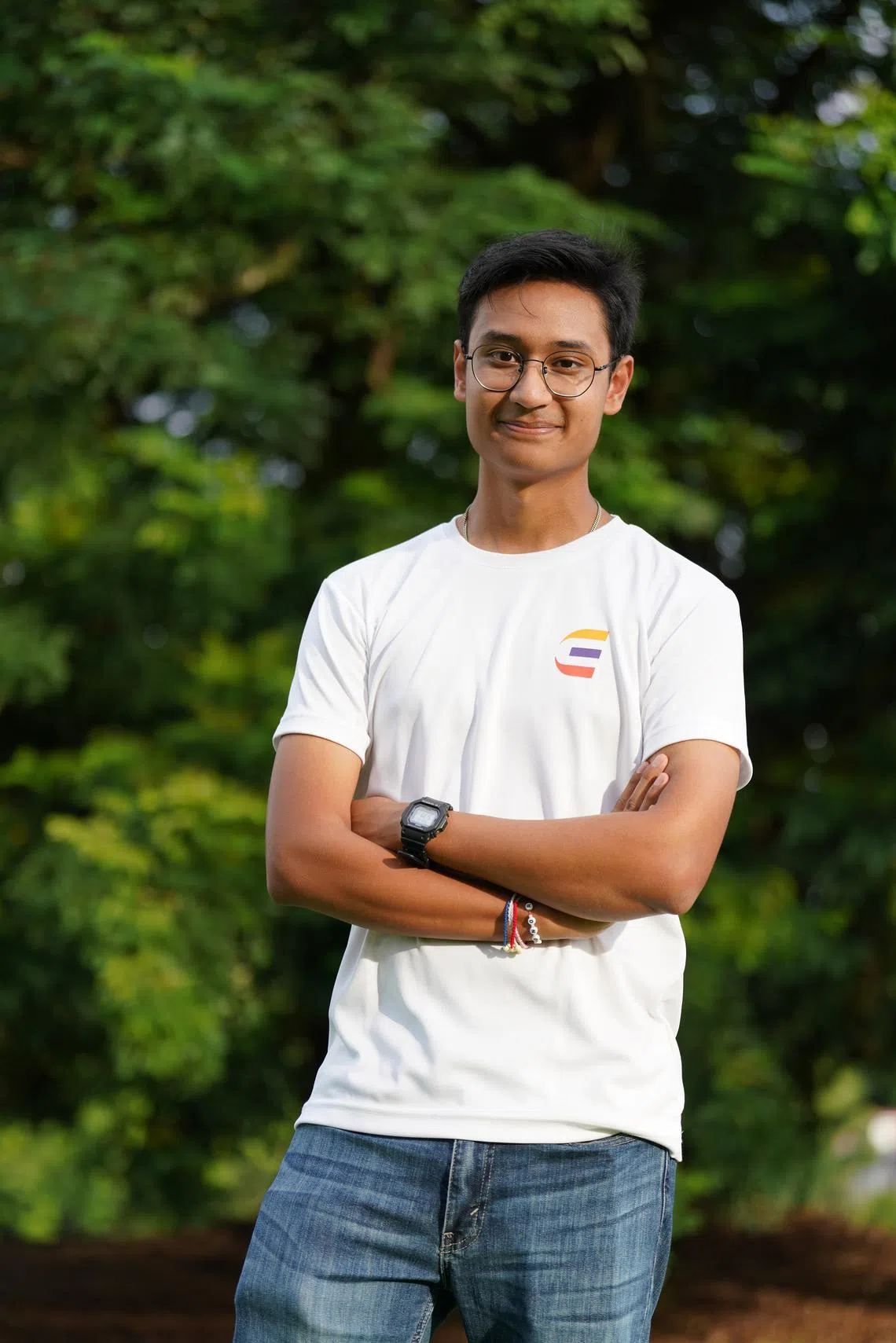Community projects a key part of student life at NUS Medicine
The NUS Yong Loo Lin School of Medicine has come far in 120 years. The Straits Times takes a look at some of its achievements and where it is headed.
Sign up now: Get ST's newsletters delivered to your inbox

One student-led project provides medical and psychosocial care to patients aged 65 years and above with multiple chronic conditions who have been recently discharged from hospital.
PHOTO: ST FILE
Follow topic:
SINGAPORE - It is a purely voluntary exercise, with no marks given for participation, but almost all medical students have helped in one or more community projects during their time at the NUS Yong Loo Lin School of Medicine.
There is a long history of voluntary work among the school’s students, with some projects running continuously for more than 20 years, said Associate Professor Marion Aw, vice-dean of the Office for Students.
“All student projects are self-initiated, empowering students to take ownership and leadership of their initiatives. NUS Medicine provides guidance through faculty advisers for each project and training from the Office for Students,” she said.
Each year, the school provides financial and administrative support for some 20 to 30 student-led projects. Those that run for years are passed on to younger students.
Associate Professor Chen Zhi Xiong from the department of physiology, who is a faculty adviser for several student projects, said: “We strongly encourage all our students to be involved in some kind of volunteering.
“We take it very seriously, and we actually have, over the past four or five years, strengthened the framework of equipping, evaluating and also advising how some of these projects should move in terms of sustainability, in terms of creating real impact.”
One of the projects he advises was started in 2014. It provides medical and psychosocial care to patients aged 65 and above with multiple chronic conditions who have been recently discharged from hospital.
Called Tri-Generational Homecare, or TriGen, to reflect three different stages in life – seniors, young adults at university (including nursing, pharmacy, dentistry and allied healthcare) and polytechnics, and students from secondary schools – it is currently led by third-year medical student Ryan Krishnan, who has been part of the project since 2021, when he was studying at a polytechnic.
Currently, there are some 180 students involved in the project, with 30 of them from NUS Medicine.
Mr Krishnan’s team recruits volunteers in August, and starts training them the following month in basic healthcare monitoring, such as measuring blood pressure and blood glucose levels, communications skills, and how to nudge seniors to make healthy choices.
The teams have 25 seniors whom they visit once a fortnight; how long the visits continue depends on how long each senior needs them. Though the help is meant to be transitional, and most people are eventually connected with community organisations, those who need longer-term care may be passed on to the following year’s team of volunteers.
Said Mr Krishnan: “When we visit them, we want to help with their continuity of care from hospital back to their homes. That’s the medical thing. But the other bit is also how we can help them achieve their sort of ideal healthy life at home.”

Tri-Generational Homecare is currently led by third-year medical student Ryan Krishnan, who has been part of the project since 2021, when he was studying at a polytechnic.
PHOTO: NUS
Most of the seniors under their care live alone, with many estranged from their families, or having outlived them. TriGen’s vision, Mr Krishnan said, “is that every elderly person in Singapore can experience the love and care of a family, through these visits”.
The student volunteers are not left to muddle along on their own. They meet and report to the patient’s healthcare providers, such as doctors, nurses, dieticians and physiotherapists, and are advised on how best to continue the care.
The teams may also link seniors to community resources that can help them in the longer term, such as nearby active ageing centres, where they can mingle with others living in the same neighbourhood and take part in stimulating activities.
Said Mr Krishnan: “It’s not just what happens when we are there for an hour or so each time. It’s also what happens when we are not there. What we really try to do is to change the health behaviour to have lasting impact for when we are not actually at the senior’s home.”
Mr Krishnan, who has been with the project for five years, said he had joined with the intention of making life better for someone else. Over time, he realised that he himself has gained a lot from it.
He said: “You gain lessons, and you get wisdom from the seniors. As a medical student, something we learn a lot about is the physical medical care of people. Something that I really learnt from these visits is the social aspect.
“My patients are people, not just conditions. They are humans with emotions, and there are a lot of other things that may be a bigger priority for them than their health. Addressing those priorities may actually improve their health.”
Brought to you by the National University of Singapore Yong Loo Lin School of Medicine.

